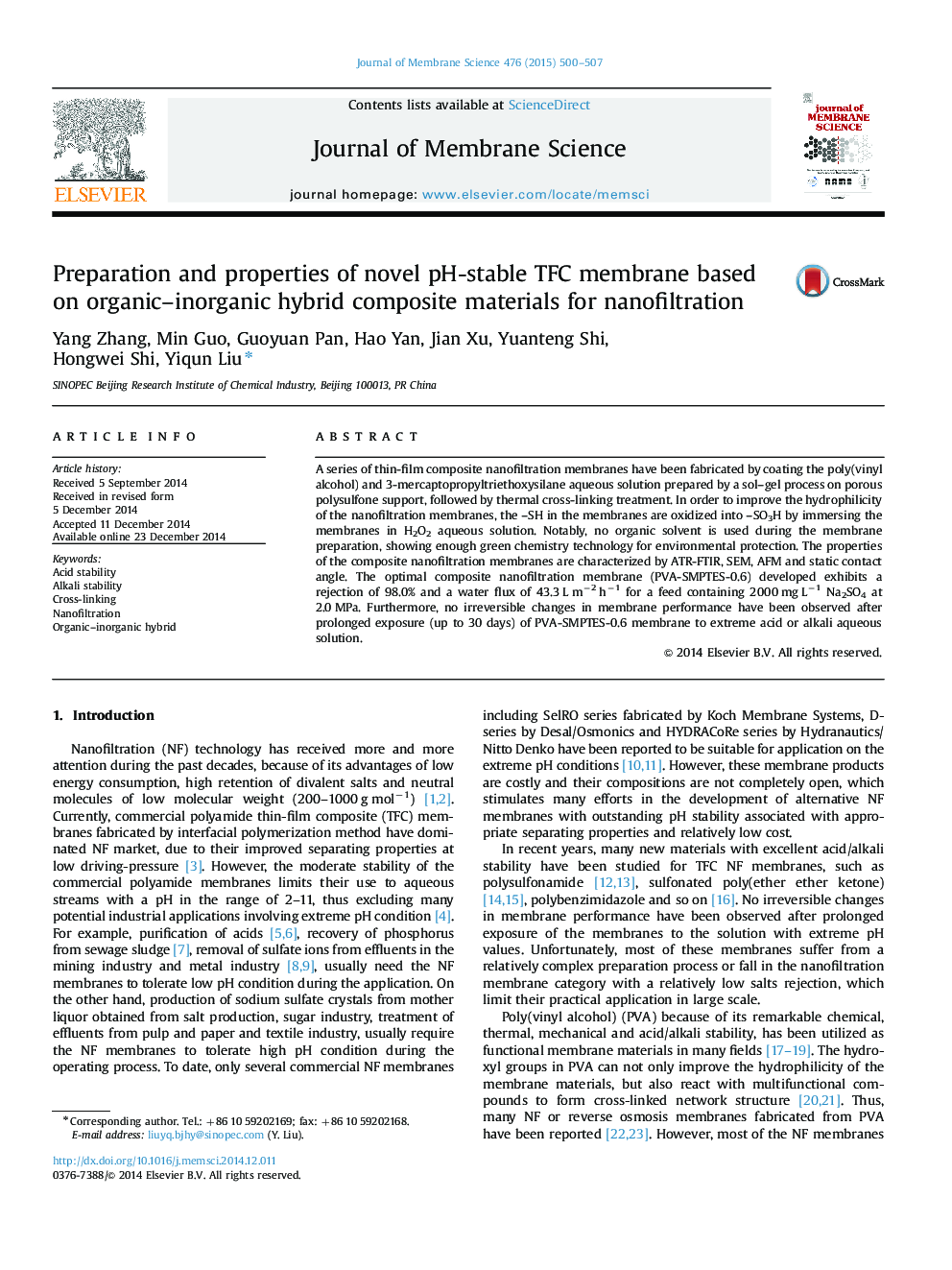| Article ID | Journal | Published Year | Pages | File Type |
|---|---|---|---|---|
| 7021748 | Journal of Membrane Science | 2015 | 8 Pages |
Abstract
A series of thin-film composite nanofiltration membranes have been fabricated by coating the poly(vinyl alcohol) and 3-mercaptopropyltriethoxysilane aqueous solution prepared by a sol-gel process on porous polysulfone support, followed by thermal cross-linking treatment. In order to improve the hydrophilicity of the nanofiltration membranes, the -SH in the membranes are oxidized into -SO3H by immersing the membranes in H2O2 aqueous solution. Notably, no organic solvent is used during the membrane preparation, showing enough green chemistry technology for environmental protection. The properties of the composite nanofiltration membranes are characterized by ATR-FTIR, SEM, AFM and static contact angle. The optimal composite nanofiltration membrane (PVA-SMPTES-0.6) developed exhibits a rejection of 98.0% and a water flux of 43.3 L mâ2 hâ1 for a feed containing 2000 mg Lâ1 Na2SO4 at 2.0 MPa. Furthermore, no irreversible changes in membrane performance have been observed after prolonged exposure (up to 30 days) of PVA-SMPTES-0.6 membrane to extreme acid or alkali aqueous solution.
Related Topics
Physical Sciences and Engineering
Chemical Engineering
Filtration and Separation
Authors
Yang Zhang, Min Guo, Guoyuan Pan, Hao Yan, Jian Xu, Yuanteng Shi, Hongwei Shi, Yiqun Liu,
